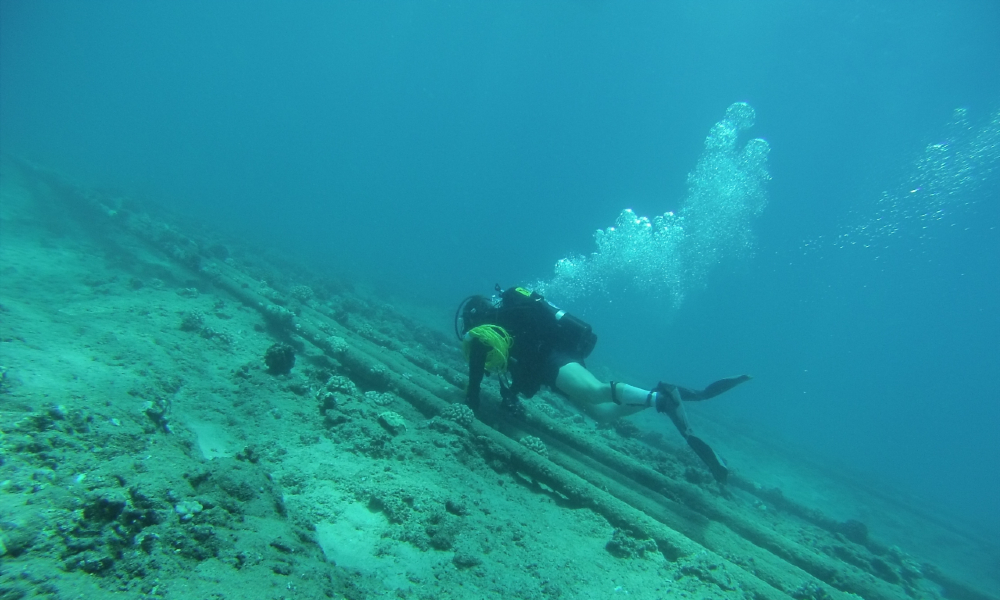Water Wars: East China Sea-son’s Greetings
On Dec. 6, following two days of talks in Shanghai, China and Japan reached a tentative agreement on the implementation of a crisis management hotline to avoid sea and air clashes in disputed areas of the East China Sea.

Published by The Lawfare Institute
in Cooperation With

On Dec. 6, following two days of talks in Shanghai, China and Japan reached a tentative agreement on the implementation of a crisis management hotline to avoid sea and air clashes in disputed areas of the East China Sea. The agreement comes a decade after the countries first proposed a communications mechanism and five years after beginning the Japan-China High-Level Consultation on Maritime Affairs. The meeting earlier this month was the eighth iteration of the consultations.
Discussions stalled from September 2012 to January 2015, after Japan nationalized three islands in the Senkaku/Diaoyu Islands. Representatives of the two countries have met regularly since 2015 to discuss the communications mechanism and other confidence-building measures, but the parties deadlocked over how to deal with incidents within Japan’s claimed territorial waters and airspace around the contested islands. Japan has demanded that the mechanism not apply to those waters, out of concern that it would encourage the Chinese to approach the islands more frequently and push their claims. Both sides reportedly agreed that the communications framework would not undermine either country’s legal position, but the terms the parties reached do not currently specify the geographical scope of the mechanism.
The parties also agreed to cooperate more in other areas, including policing transnational crimes such as smuggling and drug trafficking, maritime search and rescue, and marine geology.
Negotiators will meet again for the ninth round of consultations in the first half of 2018.
In Other News...
- United States
The White House released a new National Security Strategy on Dec. 18, which includes some notes on the U.S. perspective on East Asian security dynamics. First, the NSS says that China “want[s] to shape a world antithetical to U.S. values and interests … [and] seeks to displace the United States in the Indo-Pacific region, expand the reaches of its state-driven economic model, and reorder the region in its favor.” It asserts that China is “fielding military capabilities designed to deny America access in times of crisis and to contest our ability to operate freely in critical commercial zones during peacetime. In short, they are contesting our geopolitical advantages and trying to change the international order in their favor.” The United States is committed to protecting an open global commons, including in the sea and air domains, and prefers that disputes be resolved peacefully and in accordance with international law, “but will use all of its instruments of power to defend U.S. interests and to ensure common domains remain free.”
There is further elaboration in the regional context section of the document:
Although the United States seeks to continue to cooperate with China, China is using economic inducements and penalties, influence operations, and implied military threats to persuade other states to heed its political and security agenda. China’s infrastructure investments and trade strategies reinforce its geopolitical aspirations. Its efforts to build and militarize outposts in the South China Sea endanger the free flow of trade, threaten the sovereignty of other nations, and undermine regional stability. China has mounted a rapid military modernization campaign designed to limit U.S. access to the region and provide China a freer hand there. China presents its ambitions as mutually beneficial, but Chinese dominance risks diminishing the sovereignty of many states in the Indo-Pacific. States throughout the region are calling for sustained U.S. leadership in a collective response that upholds a regional order respectful of sovereignty and independence.
Chinese Foreign Ministry spokesperson Hua Chunying responded during her daily press conference the next day:
Cooperation is the only right choice for China and the United States and win-win cooperation can lead to a better future. As two major countries, it is not surprising for China and the United States to have some disagreements. It is advisable for our two countries to properly handle them in a constructive way on the basis of respecting each other's core interests and major concerns. We urge the US side to stop deliberately distorting China's strategic intentions, and abandon such outdated concepts as the Cold War mentality and the zero-sum game, otherwise it will only end up harming itself as well as others.
On Dec. 19, the White House announced the nomination of Susan Thornton to become the assistant secretary of state for East Asia and the Pacific. Thornton is a career foreign service member and has served as the acting assistant secretary since Daniel Russel departed in March.
- China
On Dec. 18, People’s Liberation Army Air Force (PLAAF) aircraft conducted a training exercise through the Tsushima Strait, an international waterway between the Korean Peninsula and Japan, for the first time. Two Xian H-6K long-range heavy bombers, two Sukhoi Su-30 multirole fighter jets, and one Tupolev Tu-154MD electronic intelligence aircraft participated in the drill, which prompted both the Japan Air Defense Force and the Republic of Korea Air Force to scramble jets to monitor the transit.
The PLAAF has also expanded military exercises focused on Taiwan in recent weeks, including both bomber-fighter patrols and intelligence, surveillance, and reconnaissance flights.
China plans to cover the South China Sea with ten additional remote-sensing satellites by 2021, the Sanyan Institute of Remote Sensing announced on Dec. 15. The satellites, which will launch from the southern island of Hainan beginning in 2019, will provide around-the-clock coverage of the South China Sea and enable analysis of all objects passing through the waters, including vessels.
- South Korea
On Dec. 19, a South Korean Coast Guard patrol vessel fired 249 warning shots at 44 Chinese fishing boats suspected of illegally fishing in South Korean waters. The Chinese Foreign Ministry expressed concern about the use of force and called on South Korea to refrain from taking “extreme actions that endanger people’s safety.” Seoul responded that the actions of the Coast Guard vessel were a legitimate response to the incursion by the fishing boats, which ignored eviction warnings and attempted to swarm the coast guard vessel.
Analysis and Commentary
The big attention-getter from last week was the Asia Maritime Transparency Initiative’s year-end report on Chinese construction in the South China Sea. AMTI identified substantial development on China’s outposts in the Spratly and Paracel Islands, including construction of numerous buildings and installation of technological infrastructure. The permanent facilities on which China completed or began construction during 2017 account for about 72 acres of new real estate at Fiery Cross, Subi, and Mischief Reefs in the Spratlys, and in the North, Tree, and Triton Islands in the Paracels. When asked about the report, Foreign Ministry spokesperson Lu Kang said: “It’s just normal for China to carry out peaceful construction and deploy necessary defense equipment in its own territory, which is part of China’s sovereignty. We believe it is out of ulterior motives that certain people make a fuss over and create trouble out of this issue.”
Forbes contributor Peter Pham analyzes defense spending data from 2017 for China, Taiwan, Japan, North Korea, South Korea, and ASEAN. Rising tensions in the South China Sea have led to a massive increase in defense spending in recent years, a trend Pham suggests is likely to continue.
Writing in The Diplomat, Philippines Coast Guard officer Jay Tristan Tarriela argues that the Philippines needs to significantly beef up its Coast Guard, not just its military, in order to effectively protect its interests in the South China Sea. The Philippine Coast Guard currently lacks the vessels needed to police the Spratly Islands, but Tarriela says it is feasible to build such capability within the budget constraints facing Manila. Using Philippine Navy grey hulls in disputed waters, he argues, “will either project the Philippines as a warmongering nation or escalate tensions that can go beyond Manila’s control. The coast guard, on the other hand, is uniquely suited for handling delicate maritime tasks.”
Finally, in Foreign Affairs, Purple Romero highlights the quest of a group of Philippines sailors to travel from Manila to Dezhou, China using traditional wooden boats. The journeyers originally intended to make the trip in 2010, but their plan was foiled by Philippine authorities who feared they would be accosted by Chinese patrol vessels along the way. The team will take another shot at their grand adventure in March.
Water Wars is our roundup of the latest news, analysis, and opinions related to ongoing tensions in the South and East China Seas. Please email Sarah Grant with breaking news, relevant documents, or corrections





